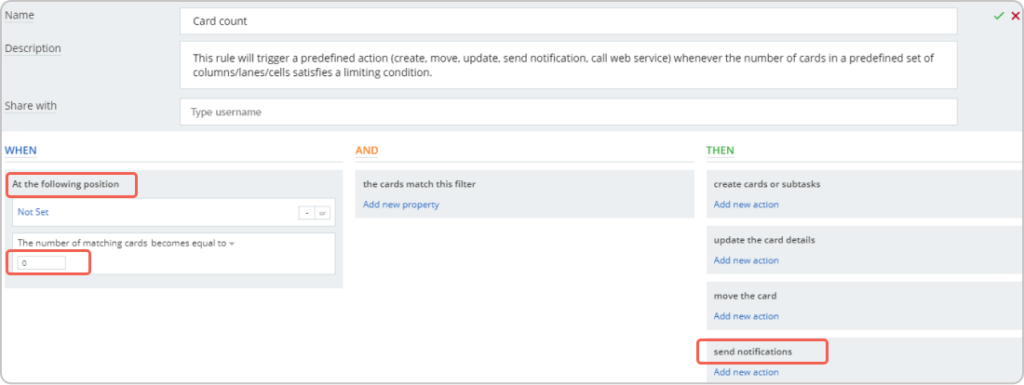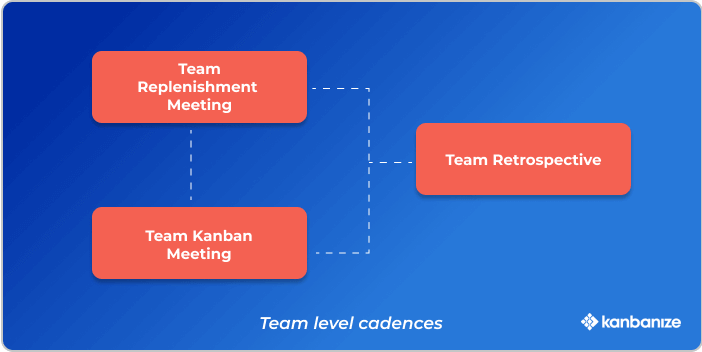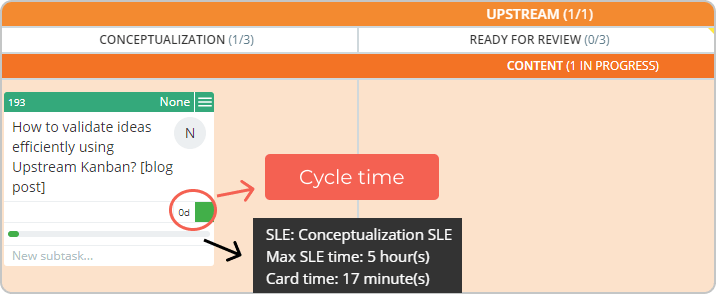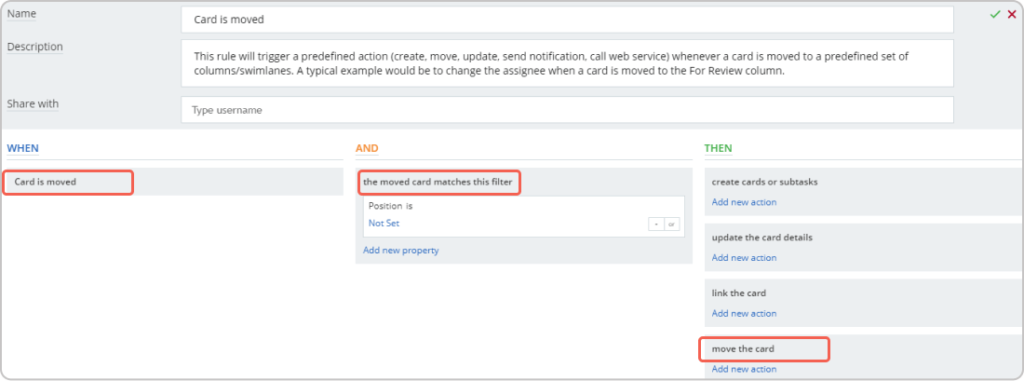Are you overwhelmed by customer feedback and requests? Is your team struggling to differentiate between ideas worth exploring and random ideas? If you have felt the devastating effects of aborted work, you're not alone.
Indeed, there's a way to streamline that rush of ideas, customer requests, feedback, and so on"”a very reasonable and intuitive way of reducing the cost of aborted work.
We would like to introduce you to "Upstream Kanban". A less known but very effective practice for creating a healthy stream of ideas worth committing to execution. In the following paragraphs, we will try to answer the following questions for you:
- What is Upstream/Discovery Kanban? Goals, stages, results.
- How to implement Upstream Kanban? Best practices.
- Why do you need an upstream part of your workflow?
All of that intertwined with our first-hand experience.
What Is Upstream Kanban?
Upstream (discovery) Kanban is a way to create a consistent stream of ideas and a prerequisite for building an efficient and healthy delivery workflow. By visualizing the stages of ideas refinement on your Kanban board, you will facilitate the transition of value-adding requests to your delivery workflow. That will ensure a steady flow of validated options.
What is the goal of Discovery Kanban?
Through exploring ideas, you will gain a better understanding of your customer issues. By evaluating various options, you will transform them into more thought-through work items ready for execution.
What are the stages of an upstream workflow?
Essential to the Upstream Kanban workflow are the idea accumulation, exploration, and validation phases.
- During the first phase happens the accumulation of ideas, capturing customer requests, feedback, or any input that appears worth exploring.
- During the exploration stage, ideas are researched and analyzed and start to shape into more comprehensive requests or dismantled into smaller work items.
- The solutions should be analyzed from different perspectives during the validation phase - are they technically or financially feasible? Are there any risks to be considered?
Of course, you can name these and add more stages depending on your business context.
What do you get as a result?
Examples of outcomes from an upstream workflow could be proof-of-concept, prototypes, technical designs, etc.
What are the attributes of an Upstream Kanban board?
According to best practices, a discovery Kanban includes:
- Visualization of the stages of a request development from a rough idea to a ready-for-execution work item.
- Visualization of the discarded ideas into a separate column to reflect upon and learn from.
- Commitment point/ Ready to start - the column which connects the Upstream with Downstream Kanban.
How to Get Started with Upstream Kanban?
It's easy as a breeze. You just need to start with your current workflow and improve as you go. Let's go through some of the best practices you can use to get the best out of implementing discovery Kanban.
Best Practice #1
Create a sequence of the stages to reflect the transformation of an idea to a commitment as it happens in your present work process. The stages will depend on your specific workflow. A very efficient way to do this is to discuss with your team what are the steps they take when starting work on a new product or solution and use that input. As one of the core Kanban principles suggests, implement (start) what you are already doing. Finally, map these stages into an upstream Kanban board.

Best Practice #2
Introduce WIP limits to your discovery Kanban system to keep a steady flow of work items ready for delivery. On the one hand, this will ensure that a sufficient number of options are available to your teams at all times. On the other, it prevents overloading your delivery workflow, overproduction of ideas that might get discarded, and represents your upstream workforce's actual capacity.

Best Practice #3
Introduce automation rules to remind your team to refill their backlog with ideas to ensure a steady downstream workflow pace. The frequent trigger of this rule can indicate that you need to engage in a team discussion on optimizing the replenishment of your pool of ideas.

Best Practice #4
Establish clear acceptance and discard requests criteria to facilitate the evaluation process. As a result of introducing these explicit policies for when ideas are to be worked on or discarded, you will focus on committing to more value-adding activities. In addition, by defining a policy for when a request has aged enough to be closed, you will avoid discarding work under development and potential misuse of resources during the delivery process.
Best Practice #5
Engage your team in a Replenishment meeting. As a result, you'll settle on which tasks should be executed next and those that need more research based on the validation results. The Replenishment review should help you answer questions such as: are there enough options upstream to provide choice to the delivery teams, what is the discard rate of the discovery workflow, are there enough good ideas, etc.

Unified or Separate Kanban Boards for Visualizing Discovery and Delivery Workflows?
There's no silver bullet answer to whether you should visualize the discovery and delivery processes in your workflow on a single unified board or use separate ones. Depending on your context, you can choose to use one upstream Kanban board and another for your work delivery.
Some organizations engage different teams or even external force to work on the two workflows. For them, separate boards tracking their work would be more beneficial.
On the other hand, as we at the Businessmap marketing department do, you can embed the discovery workflow into your existing Kanban board. We use the upstream process to research topics we'd like to cover on our blog. We explore all the available channels to receive valuable insights on the matter - market research, customer reviews, feedback from our client-facing partners, etc. We use that input to conceptualize our next piece and move it down to the next phase, where it gets reviewed and evaluated. We can only then move the item downstream and start actively working on it.

Using unified оr separate boards to visualize the discovery and delivery processes in your workflow should reflect and support the way you operate. This should be your driving force when deciding. What's more important is how you calculate the lead time in your workflow.
How Do You Calculate Lead Time - Including or Excluding Upstream Workflow?
In the scenario, where we have implemented upstream Kanban into our work delivery process, once a card enters the Conceptualization column, its cycle time starts to accumulate. This works great for our team as we want to finish the item with the agreed cycle time, and so we want to start immediately to work on it. To help us deliver the work downstream faster, we also implemented the Service Level Expectations (SLE) feature into our upstream Kanban part of the board. The feature helps us define how long the conceptualization should take so it does not disrupt the delivery process down the line.

Let's review another scenario where you have the Discovery Kanban and Delivery Kanban boards separated. Team A works on the research board, and team B on the delivery. Team A has gone through several ideas, explored, and validated that one of them is worth delivering. How is that communicated to team B so lead time is not started to aggregate until the work item is available on the Delivery Kanban board?
In Businessmap, you can do that by using business automation rules.
For instance, the idea has gone through all the stages of your research process and reached the "Ready For Engineering" - the last stage of the upstream workflow. In other words, the item is ready to leave the discovery process and be transferred into your downstream (delivery) Kanban board. So far, the card has accumulated lead time only on the discovery Kanban board and none within the delivery workflow and you want to keep it that way until Team B is ready to pull the item.

To transfer the task mentioned above into the delivery workstream, you can use a business rule to create a new card in the backlog of the Downstream board once a card from the Upstream Kanban board reached a specific column. In this case, "Ready For Engineering".

Another approach to this is to use the move card rule, where once a card enters a certain column, it triggers the rule to be moved to another location or the backlog of your Delivery Kanban board.

In both cases, once entered the engineering team board, the card starts to accumulate lead time from scratch.
Why Do You Need Upstream Kanban System?
Introducing upstream Kanban is a clear indication of organizational maturity. As the first State of Kanban report suggests, 24% of organizations today are using Portfolio Kanban boards along with upstream or delivery Kanban boards.
Here's why project management organizations tend to implement discovery Kanban today:
- It helps to visualize all the available options and make better decisions on what to take downstream
- It encourages constant learning through validation of ideas and reducing the cost of learning simultaneously with the delivery
- It ensures that there's always work to pull for the delivery teams
- It increases alignment between the teams involved with the research and delivery phases
- It creates a healthy communication of risk projects with discovery and delivery teams/organizations
Upstream Kanban - a Value-Generating Activity
No matter the industry you're in, chances are you're dealing with customers and a constant flow of requests. By streamlining this flow in a meaningful way, analyzing and learning from your experience, you will ensure sustainable and healthy growth.
We hope that you are convinced of the impact a steady discovery workflow has on the overall work process by now. So go ahead, set up your upstream workflow, capture and evaluate ideas, populate the commitment column and let the magic happen!

Iva Krasteva
Content Creator Expert | Agile Practitioner | Kanban Certified
With a background in Intellectual Property, SEO, content writing, and training in Lean, Agile, and Kanban, Iva is an enthusiastic Agile practitioner who embraces collaboration and flexibility every step of the way. Driven by constant learning and knowledge and fascinated by people's creativity.



